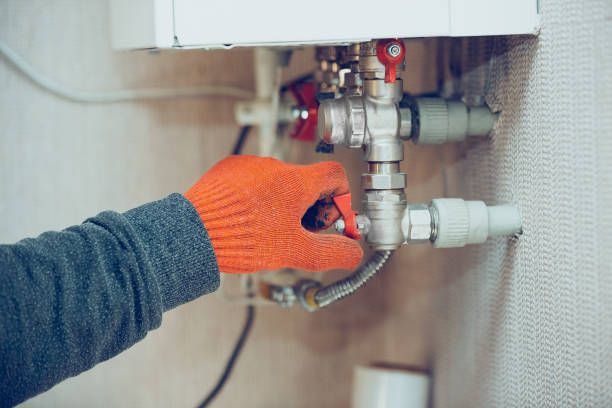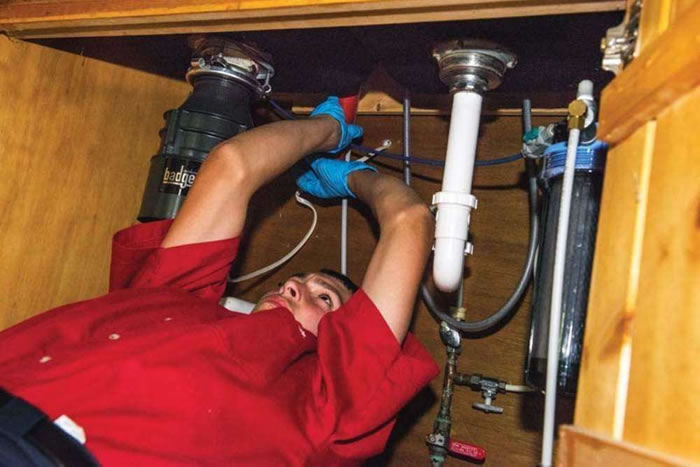Just how do you feel in relation to 9 Reasons for Low Water Pressure in Your House?

Low water stress in your home can be a frustrating trouble, affecting every little thing from showering to washing recipes. If you're experiencing weak water circulation, there are numerous feasible reasons and options to check out. In this guide, we'll discuss usual factors for low water stress and useful actions to address the problem successfully.
Introduction to Low Tide Stress
Low tide pressure happens when the circulation of water from your taps, showers, and various other components is weaker than common. This can make daily tasks a lot more challenging and much less effective. Recognizing the root causes of low water pressure is critical to locating the right option.
Common Reasons For Low Tide Stress
Faulty Stress Regulatory Authorities
Stress regulators are accountable for keeping consistent water pressure in your home. If they malfunction, it can lead to low tide stress or irregular flow throughout the house.
Municipal Water System Issues
Occasionally, the trouble lies outside your home. Municipal supply of water problems, such as main line leakages or maintenance work, can briefly minimize water stress in your location.
Pipe Obstructions
Gradually, pipelines can end up being obstructed with natural resource, debris, or debris, limiting the circulation of water. This is a common concern in older homes with galvanized steel pipes.
Rust
Rust within pipelines can lead to leaks and minimized water pressure. Rust buildup can constrict water circulation, especially in aging plumbing systems.
How to Detect Low Tide Stress
Checking Pipes
Examine visible pipes for indications of leaks, corrosion, or blockages. Pay attention to any uncommon noises, such as banging or rattling pipes, which can suggest issues within the plumbing system.
Consulting with a Plumber
If you're unable to determine the root cause of low water pressure, take into consideration working with an expert plumber to perform a detailed examination. They can recognize underlying issues and recommend appropriate services.
Examining Faucets and Fixtures
Start by evaluating the water pressure at various taps and fixtures throughout your home. If the concern is separated to specific locations, it might indicate localized troubles.
Do It Yourself Solutions to Deal With Low Water Stress
Flushing Water Heater
Debris build-up in the water heater can limit circulation and minimize efficiency. Flushing the tank periodically aids get rid of debris and keep ideal performance.
Checking Stress Regulatory Authority
Guarantee that the pressure regulatory authority is working appropriately. Changing or replacing the regulator can help bring back correct water pressure throughout your home.
Cleansing Aerators and Showerheads
Mineral deposits can collect in aerators and showerheads, reducing water circulation. Remove and clean up these parts frequently to boost water pressure.
Cleaning Clogs in Water Lines
For minor clogs, try utilizing a plumbing serpent or chemical drain cleaner to clear obstructions in pipes. Beware when making use of chemicals and follow security guidelines.
When to Call an Expert Plumber
If do it yourself initiatives fail to fix the concern or if you believe significant plumbing issues, it's finest to seek help from a qualified plumber. They have the knowledge and tools to attend to intricate concerns securely and effectively.
Preventive Measures to Maintain Water Pressure
Installing a Stress Booster
Consider installing a pressure booster pump to enhance water pressure in areas with continually reduced circulation. This can be specifically beneficial for multi-story homes or homes with high-demand fixtures.
Tracking Water Usage
Be mindful of water usage behaviors and stay clear of ill-using the plumbing system. Straightforward adjustments, such as astonishing showers and washing tons, can assist maintain adequate water stress.
Normal Upkeep
Arrange routine maintenance for your plumbing system to avoid problems such as rust, leaks, and clogs. Dealing with minor troubles early can help avoid more significant repairs later.
Conclusion
Taking care of low water pressure can be frustrating, yet recognizing the underlying causes and carrying out proper options can bring back optimal flow throughout your home. Whether it's cleaning aerators, inspecting pipes, or seeking advice from a plumber, taking aggressive steps can make certain a consistent supply of water for your day-to-day requirements.
FOUR WAYS TO FIX LOW WATER PRESSURE NOW
Turning on a shower or faucet only to find the water comes out in a sad, slow drizzle is never a good feeling. How exactly are you supposed to wash a pan or take a quick shower when it takes 10 minutes just to rinse off a little soap? The good news is that when your water pressure is bad, there's always a cause: typically one that can be easily fixed. Here are some of the most common causes of low pressure and what you can do to fix the issue:
DEBRIS AND MINERAL DEPOSIT BUILDUPS
If you notice low water pressure from just one or two of the fixtures in your house, the problem likely has to do with debris buildup. Water is full of minerals and other debris, all of which can accumulate in your pipes and on your fixtures. This can cause a blockage that affects how much water flows through. To fix this, try filling a small plastic bag with white vinegar, and use a rubber band to hang it around your showerhead or faucet. Let the head of the fixture soak for a few hours, and the vinegar should loosen the deposits.
WATER LEAKS
Leaks are another common cause of low water pressure. If water is flowing out of your plumbing through a hole or crack before it can reach your fixture, the pressure coming out of the faucet or showerhead will be lower. A plumbing professional is your best bet for finding and repairing a leak in your water supply pipes.
Leaks are another common cause of low water pressure. If water is flowing out of your plumbing through a hole or crack before it can reach your fixture, the pressure coming out of the faucet or showerhead will be lower. A plumbing professional is your best bet for finding and repairing a leak in your water supply pipes.
A VALVE ISSUE
If you have low water pressure throughout your home, check your main shut-off valve to make sure it's completely open. You may also want to see if there's a pressure-reducing valve installed. If there is, have a plumber help you adjust the settings to get the pressure you're looking for.
OTHERS USING WATER
Believe it or not, your low water pressure could be caused by your neighbors. If you notice low pressure at certain times of day, it may be because you and the people living next to you have similar schedules - when everyone is showering at the same time, the pressure will be lower in every home. Low pressure throughout the neighborhood may also be caused by an issue with your municipal water supply. If that's the case, call the supplier to see if they're working on the issue.
https://www.rotorooter.com/blog/water-leaking/low-water-pressure-fixes/

As a keen reader about , I was thinking sharing that excerpt was a great idea. Feel free to take a moment to distribute this article if you enjoyed reading it. Thanks so much for taking the time to read it.
Book Now!
Comments on “Practical Fixes for Dealing with Low Water Pressure in Your Home”